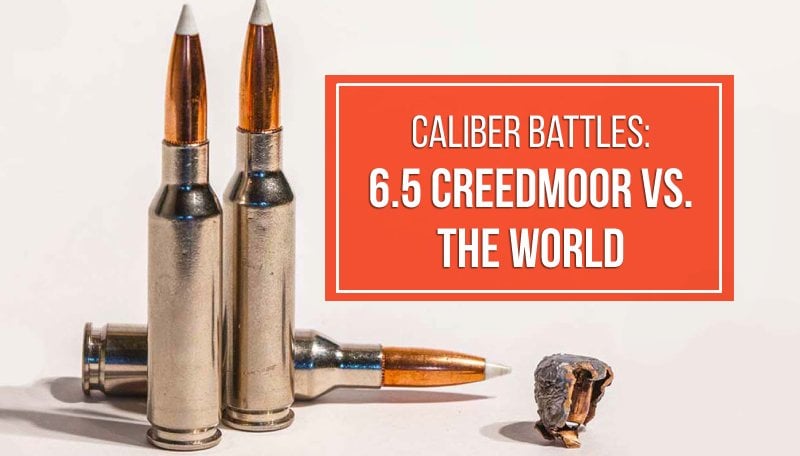
Last Updated on
You might be thinking, “Why is everyone head over heels for this 6.5 Creedmoor?” Well, our dear reader, that’s exactly what we’re going to explore in this article post. We’ll delve into the nitty-gritty of external and terminal ballistics of several popular rifle cartridges and compare them to the 6.5 Creedmoor to see which cartridge comes out on top for various applications like hunting and long-range competitive shooting. So, let’s embark on this epic journey through the world of ballistics! Because, after all, who doesn’t love a good cartridge comparison?
Table of Contents
6.5 Creedmoor Ballistics, Recoil & Effective Range
.308 Win vs. 6.5 Creedmoor
6.5 PRC vs. 6.5 Creedmoor
.270 Win vs. 6.5 Creedmoor
.243 Win vs. 6.5 Creedmoor
.300 Win Mag vs. 6.5 Creedmoor
Final Words
6.5 Creedmoor Ballistics, Recoil & Effective Range
Developed by Hornady and Creedmoor Sports in 2007, the 6.5 Creedmoor (CM) was designed to offer superior accuracy, low recoil, and high performance at extended ranges.
One of the key factors that contribute to the impressive ballistics of the 6.5 CM is its high sectional density and ballistic coefficient. Sectional density refers to the ratio of a bullet’s mass to its diameter, while the ballistic coefficient measures a bullet’s ability to overcome air resistance during flight. In layman’s terms, these two factors work together to improve a projectile’s penetration capabilities and aerodynamic efficiency.
Additionally, the 6.5 Creedmoor owes its great aerodynamic efficiency and external ballistic performance to its sufficient case volume and generous bore area. It means the cartridge contains a sufficient amount of propellant and a long, slender bullet, delivering a flat trajectory and maintaining velocity and energy over longer distances.
Generally speaking, the 6.5 Creedmoor shines across all ranges. But at long ranges beyond 800 yards, the 6.5 CM truly excels with its outstanding ballistics, delivering consistent accuracy and minimal wind drift, making it a favorite among long-range precision shooters. The 6.5 Creedmoor effective range is past 1,200 yards, but an ethical deer hunting distance is limited to 500-600 yards.
.308 Win vs. 6.5 Creedmoor

The debate between the 6.5 Creedmoor and the .308 Winchester is a classic one. Introduced in 1952, the .308 Winchester has long been a popular choice among hunters and shooters due to its versatility. The .308 Win typically features bullet weights ranging from 110 to 180 grains, with muzzle velocities between 2,600 and 3,000 fps and muzzle energies around 2,600 to 2,800 ft-lbs.
Long-Range Performance. Here, the 6.5 CM generally has the edge. At 300 yards, both cartridges perform similarly, but as the distance increases, the 6.5 Creedmoor’s superior ballistic coefficient and lower wind drift become more apparent. At 600 yards, the 6.5 CM maintains a flatter trajectory due to a lighter bullet and higher velocity and suffers less from wind drift, while beyond 800 yards, the gap widens further.
Terminal Performance. Both cartridges can be effective, depending on the specific bullet and shot placement. The .308 Win generally has higher muzzle energy, which can translate to greater knockdown power. However, the 6.5 Creedmoor’s higher sectional density allows for better penetration, making it equally capable of taking down big game within reasonable distances, which should be 500-600 yards max if an ethical deer kill is what we are talking about.
Recoil. The 6.5 Creedmoor offers a noticeable advantage, with less felt recoil than the .308 Winchester.
6.5 PRC vs. 6.5 Creedmoor
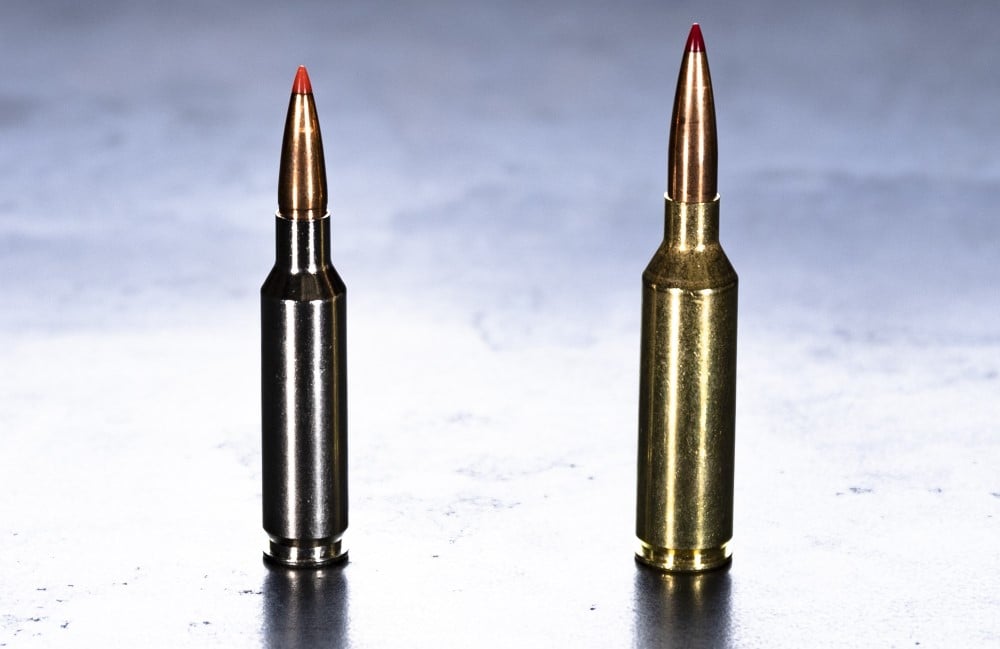
The 6.5 Precision Rifle Cartridge (PRC) is a relatively new addition to the world of long-range shooting, introduced by Hornady in 2018. Developed as a magnum version of the 6.5 Creedmoor, the 6.5 PRC was designed to provide even better long-range performance.
The 6.5 PRC typically features bullets weighing between 120 and 147 grains, with a larger case capacity than the 6.5 Creedmoor. This allows for more powder and consequently higher velocities, ranging from 2,900 to 3,200 fps. Muzzle energies for the 6.5 PRC are generally around 2,300 to 2,800 ft-lbs.
Long-Range Performance. The 6.5 Creedmoor and the 6.5 PRC, both boasting those high BC 6mm bullets, perform exceptionally well. At 300 yards, there is little difference between the two, but as the distance increases, the 6.5 PRC’s higher velocity and energy due to its larger case capacity start to show their advantages. Beyond 600 yards, the 6.5 PRC has less bullet drop and is less prone to wind drift due to the 250 fps advantage in muzzle velocity. To give you an idea of the superiority of the 6.5 PRC, at 1,000 yards, the 6.5 Creedmoor has around 23% more bullet drop and 15% more wind drift than the 6.5 PRC.
Terminal Performance. The 6.5 PRC generates about 20% more muzzle energy and 200-250 fps more muzzle velocity than the 6.5 Creedmoor, which means more kinetic energy on impact, making the 6.5 PRC slightly better in terms of terminal performance.
Recoil. The 6.5 PRC does produce more recoil than the 6.5 Creedmoor, but it is still manageable and not as heavy as the punishing recoil associated with some magnum cartridges, such as the .300 Winchester Magnum.
.270 Win vs. 6.5 Creedmoor
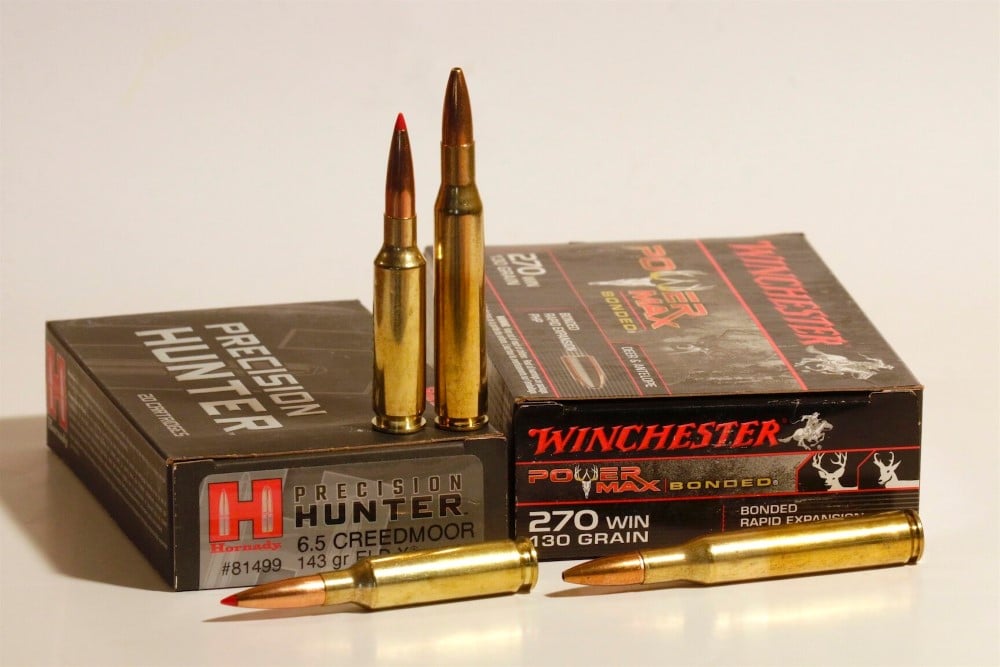
Introduced in 1925, the .270 Winchester typically features bullets weighing between 110 and 150 grains, with velocities ranging from 2,900 to 3,200 fps depending on the bullet weight. Muzzle energies for the .270 Win are generally around 2,500 to 3,000 ft-lbs. The 6.5 CM is substantially smaller than the .270 Win and, thus, contains less propellant.
Long-Range Performance. The .270 Winchester shows a flatter trajectory than the 6.5 Creedmoor and retains more energy downrange. However, while the .270 Winchester outperforms the 6.5 Creedmoor in terms of velocity and energy beyond 500 yards, its advantage diminishes from an initial 515 ft-lbs of energy at the muzzle to just 189 ft-lbs of energy at this distance. Although the 6.5 Creedmoor’s superior ballistic coefficient gives a slight advantage over the .270 Winchester in terms of wind drift, the difference is minimal – at 500 yards, the .270 Winchester experiences only an additional 0.5″ of wind drift. Surprisingly, the old .270 Win also drops considerably less than the 6.5 CM – at 800 yards, the difference in bullet drop is 17 inches.
Terminal Performance. Both cartridges are capable of ethically taking down medium and large game animals. However, the .270 Win, with its higher muzzle energy and larger bullet diameter, can deliver more kinetic energy on impact, making it better suited for a deer-sized game.
Recoil. The 6.5 Creedmoor has an edge over the .270 Win, as it generally produces less felt recoil.
.243 Win vs. 6.5 Creedmoor
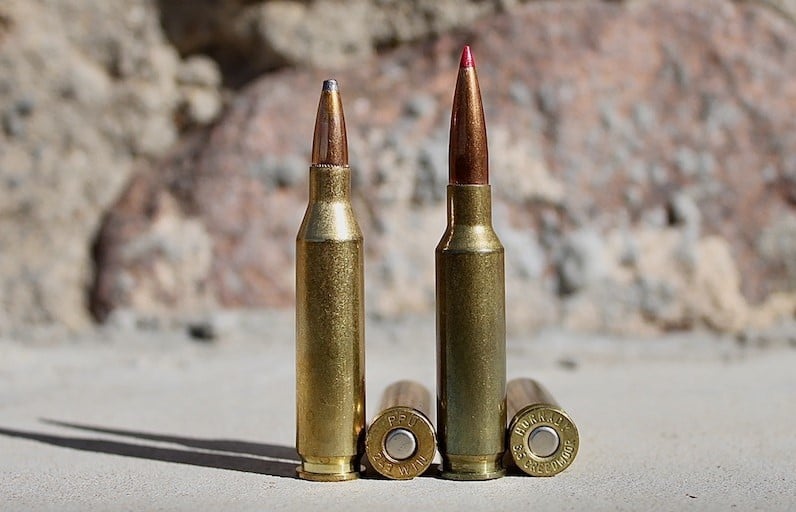
The .243 Winchester typically features bullets weighing between 55 and 110 grains, with velocities ranging from 2,900 to 3,800 fps depending on the bullet weight. Muzzle energies for the .243 Win are generally around 1,800 to 2,200 ft-lbs.
Long-Range Performance. The .243 Winchester fires smaller diameter bullets at a significantly higher velocity, resulting in less bullet drop and, thus, a flatter trajectory at a longer range. However, the 6.5 Creedmoor retains more energy downrange and drifts less in the wind thanks to the aerodynamic projectile. At shorter ranges, the cartridges are evenly matched, with the .243 Winchester possibly having a small advantage due to its flatter trajectory, which can help hunters place their shots more accurately.
Terminal Performance. The larger diameter bullets of the 6.5 Creedmoor (.264″) have about 17% more frontal surface area than the .243 Winchester bullets (.243″), which can result in more tissue damage and blood loss. Additionally, the 6.5 Creedmoor has a slight edge over the .243 in bullet sectional density, especially with heavier bullets, which can lead to deeper penetration.
Recoil. Despite the 6.5 Creedmoor being known for its relatively gentle recoil, the .243 Winchester holds a significant advantage, particularly for smaller or recoil-sensitive hunters. The impact of recoil on a person’s shooting accuracy should not be underestimated, as even though some individuals may handle recoil better than others, a milder recoiling cartridge will generally lead to greater accuracy when all other factors remain equal.
.300 Win Mag vs. 6.5 Creedmoor
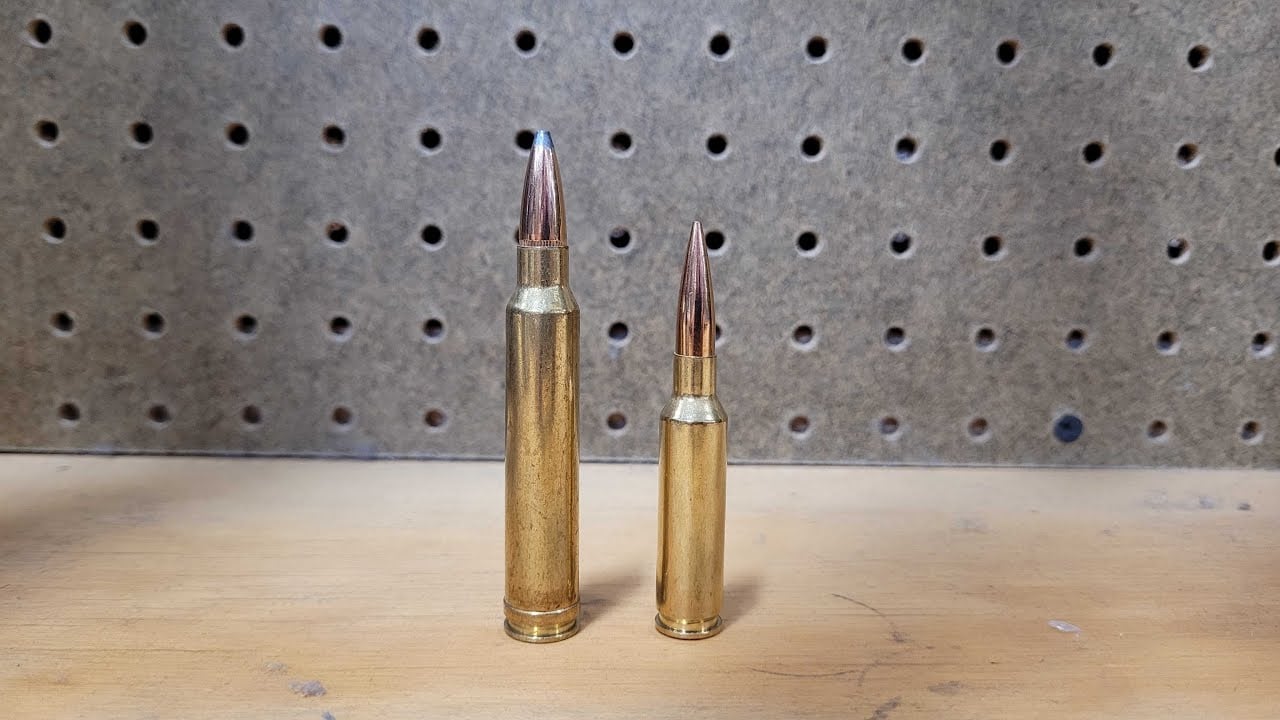
The .300 Winchester Magnum is a powerful rifle cartridge that quickly gained popularity among hunters and long-range shooters for its impressive performance. With a typical bullet weight ranging from 150 to 200 grains, the .300 Win Mag can achieve muzzle velocities of 2,850 to 3,260 fps and deliver muzzle energies between 3,500 and 4,000 ft-lbs.
Long-Range Performance. The .300 Win Mag’s higher muzzle velocity and energy (about 50-55%) provide flatter trajectories and less bullet drop over a distance. However, the 6.5 Creedmoor, with its high ballistic coefficient bullets, offers better resistance to wind drift, which helps to compensate a little for the gap in performance as the range increases.
Terminal Performance. The .300 Win Mag is known for delivering substantial kinetic energy upon impact, thanks to its heavier bullets and higher muzzle velocities. This results in greater penetration and tissue damage, making it a preferred choice for hunting in plains or mountains. On the other hand, the 6.5 Creedmoor, with its lighter bullets and slower velocities, still provides adequate terminal performance for medium- and deer-sized game at reasonable distances. While the .300 Win Mag’s larger bullet diameter and heavier projectile yield more devastating wound channels, the 6.5 Creedmoor is no slouch in this department and can effectively take down most North American game animals.
Recoil. The 6.5 Creedmoor has a clear advantage over the .300 Win Mag. The .300 Win Mag’s higher energies and larger bullet weights result in more felt recoil for the shooter. In contrast, the 6.5 Creedmoor is known for its mild recoil, making it a more comfortable option for shooters of all skill levels, especially those sensitive to heavy recoil.
Final Words
The choice of cartridge ultimately depends on the individual’s specific needs and preferences. Hunters and long-range precision target shooters may prioritize different aspects such as flat trajectory, minimized wind deflection, or retained energy. While the 6.5 Creedmoor offers a great balance of performance and manageability, alternatives like the .308 Win, 6.5 PRC, .270 Win, .243 Win, and .300 Win Mag bring their unique strengths to the table. So, by carefully evaluating your priorities and understanding the capabilities of each cartridge, you can make a decision that best suits your shooting and hunting requirements.
FAQ
.308 Win vs. 6.5 Creedmoor?
The 6.5 Creedmoor generally offers better ballistics, a flatter trajectory, and less wind drift due to its higher ballistic coefficient. Additionally, the 6.5 Creedmoor has milder recoil, making it more comfortable for most shooters. However, the .308 Win provides more energy at closer ranges, making it a better choice for hunting big game at moderate distances.
6.5 PRC vs. 6.5 Creedmoor?
The 6.5 PRC is essentially a magnum version of the 6.5 Creedmoor, offering higher muzzle velocities, flatter trajectories, and more energy on target. This makes the 6.5 PRC more suitable for hunting big animals at extended ranges. However, the 6.5 Creedmoor boasts lower recoil and is generally more comfortable to shoot, especially for newer or recoil-sensitive shooters. Additionally, the 6.5 Creedmoor is more widely available and typically has a lower cost per round compared to the 6.5 PRC.
What is 6.5 Creedmoor ballistics?
The cartridge’s high ballistic coefficient bullets offer excellent resistance to wind drift and maintain velocity well downrange, resulting in a flatter trajectory compared to many other cartridges. The 6.5 Creedmoor maximum effective range is past 1,000 yards, but if you want to hunt a deer-sized game, your shooting range must not exceed 600 yards, as at this distance, the energy is still enough for an ethical kill.




Leave a Reply